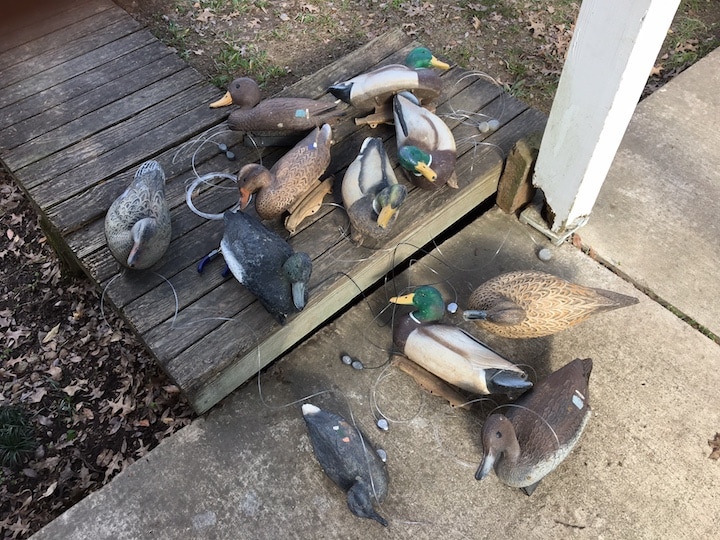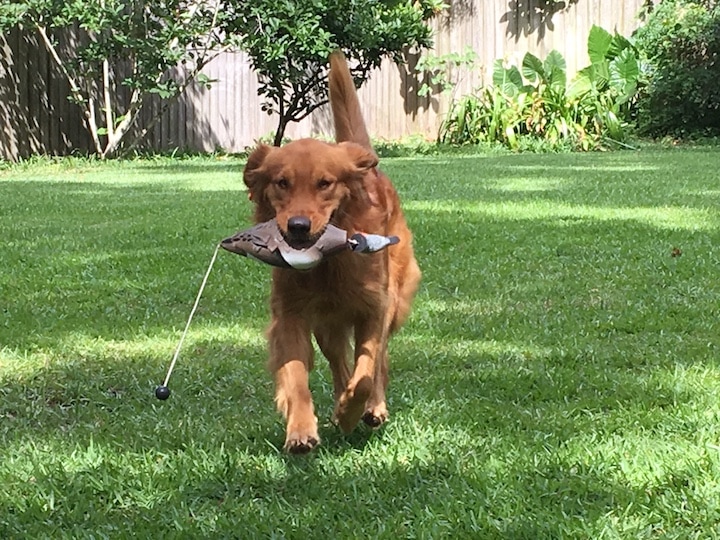 Darren Digby
Darren Digby With the calendar flipped to June, we’re smack in middle of the offseason doldrums for the hunting contingent. My end of season hangover has waned and I can now stand to even think about hunting, much less put wheels in motion on some early preparations. Hopefully you’ve been out on the water boxing some fish and getting a stockpile to serve later this fall. It’s hard to beat a September Saturday evening tending fresh teal breast poppers and redfish on the half-shell as they sizzle on the pit; with football on the TV of course. That’s getting a little ahead of ourselves, though.
As far as offseason goings-on, one key item of note is the breeding population survey which is wrapping up. This is an annual survey performed by the US Fish & Wildlife Service using both airplane-based and ground-based visual observation to count numbers of breeding ducks across the upper Midwest, Canada, and beyond. It is these key numbers that dictate the season framework to be set for the season of the following year.
Of note, this survey also entails evaluation of habitat conditions across the breeding grounds, including counting of “ponds” available to breeding ducks. The condition of the habitat (e.g. how much water and grasslands is available) and the total number of ponds play a critical role in producing young of the year birds for the fall flight. Without water, there’s reduced food resources such as small invertebrates for ducks to feed upon. Without sufficient grassland acreage, there’s less area for nesting ducks to hide, and thus predation tends to take its toll on nesting birds. Young hatchlings are very susceptible to attack from skunks, raccoons, badgers, foxes, etc. but so are adults which spend a portion of the summer unable to fly during their annual molting period.
Thankfully preliminary reports from the breeding grounds point to respectable conditions, with some areas likely improved over last season with ample water available in seasonal wetlands. Barring something drastic changing, this should result in another strong fall flight. Regardless, it will be what it will be, so your best bet is to act upon the tasks that are within your control.
In recent weeks I’ve done a fair bit of re-rigging on some decoys that had old rigging, and patched decoys that had leaks or holes from catching a stray pellet or three. For patching holes I’m draining each decoy of any remaining water inside then patching each hole with a clear silicone adhesive. This usually leaves the decoy as good as new and able to serve for years to come.
As far as offseason goings-on, one key item of note is the breeding population survey which is wrapping up. This is an annual survey performed by the US Fish & Wildlife Service using both airplane-based and ground-based visual observation to count numbers of breeding ducks across the upper Midwest, Canada, and beyond. It is these key numbers that dictate the season framework to be set for the season of the following year.
Of note, this survey also entails evaluation of habitat conditions across the breeding grounds, including counting of “ponds” available to breeding ducks. The condition of the habitat (e.g. how much water and grasslands is available) and the total number of ponds play a critical role in producing young of the year birds for the fall flight. Without water, there’s reduced food resources such as small invertebrates for ducks to feed upon. Without sufficient grassland acreage, there’s less area for nesting ducks to hide, and thus predation tends to take its toll on nesting birds. Young hatchlings are very susceptible to attack from skunks, raccoons, badgers, foxes, etc. but so are adults which spend a portion of the summer unable to fly during their annual molting period.
Thankfully preliminary reports from the breeding grounds point to respectable conditions, with some areas likely improved over last season with ample water available in seasonal wetlands. Barring something drastic changing, this should result in another strong fall flight. Regardless, it will be what it will be, so your best bet is to act upon the tasks that are within your control.
In recent weeks I’ve done a fair bit of re-rigging on some decoys that had old rigging, and patched decoys that had leaks or holes from catching a stray pellet or three. For patching holes I’m draining each decoy of any remaining water inside then patching each hole with a clear silicone adhesive. This usually leaves the decoy as good as new and able to serve for years to come.
My retriever has also gotten some basic work in the backyard and local waters in the late evenings. Nothing too intensive, but just enough to keep him handling how he should be and getting some exercise. This is usually just a dozen or so bumpers per session at minimal distance, nothing too strenuous given the heat.
If you’ve got work to be done on your duck boat such as aluminum repairs or mud motor servicing, your favorite mud boat company would probably appreciate you bringing it in sooner than later. Every season hunters start thinking ducks at end of August and go to give that mud motor a crank to find it out of tune and the service folks end up under the gun to get you ready for the September teal opener. Of note, the annual 16-day teal season will open on Friday September 15th this season so prepare your work schedule accordingly!
In the meantime, good luck fishin’!
In the meantime, good luck fishin’!



